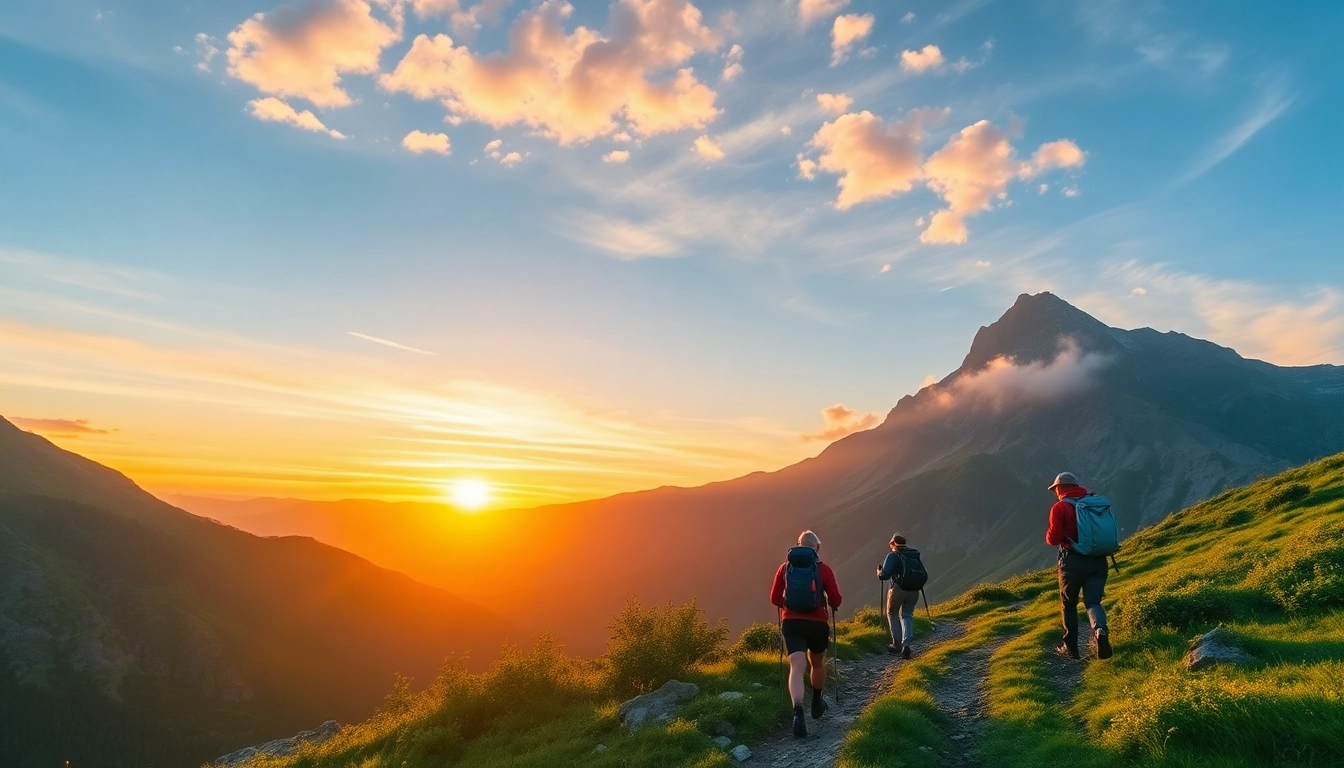Introduction to Lombok: Why It’s Considered the Best Island in Indonesia
Nestled amidst the turquoise waters of the Indonesian archipelago, Lombok is often hailed as the best island to experience the authentic charm of Indonesia. While Bali might be more globally renowned, Lombok offers a more untouched, pristine environment that appeals to travelers seeking natural beauty, rich culture, and adventure all in one package. Its diverse landscapes, from lush rainforests and towering volcanoes to pristine beaches, create an unrivaled tapestry of scenery that alone positions Lombok as a top contender for the title of Indonesia’s best tropical destination.
The island’s unique geography and scenic spots draw travelers eager to explore less crowded paradises, providing immersive cultural encounters and outdoor adventures. This combination of natural splendor and cultural authenticity makes Lombok not just a beautiful place to visit, but an experience that resonates deeply with those seeking the best in travel. Whether you’re a nature lover, a culture enthusiast, or an adventure seeker, Lombok stands out as Indonesia’s premier destination for a comprehensive and authentic island experience.
Unique Geography and Scenic Spots
Lombok’s geography sets it apart from other Indonesian islands, offering a varied landscape that caters to different interests. At its core lies Mount Rinjani, Indonesia’s second-highest volcano, which provides a challenge for seasoned hikers and a stunning panoramic view for all. The crater lake, Segara Anak, adds to the island’s mystical appeal, serving as a symbol of Lombok’s volcanic origins.
The surrounding coastlines boast some of the most breathtaking beaches in Southeast Asia, such as Kuta Beach and Tanjung Aan, renowned for their soft white sands, clear waters, and excellent surf conditions. Gili Islands—Gili Trawangan, Gili Air, and Gili Meno—are situated just off the coast, offering idyllic island escapes with vibrant coral reefs perfect for snorkeling and diving. The coastal topography includes dramatic cliffs and secluded coves, creating a diverse scenic landscape that visually outshines many other destinations.
Lombok’s lush rainforests and verdant rice terraces extend inland, providing opportunities for eco-tourism and wildlife observation. The island’s natural beauty is further complemented by iconic waterfalls like Sendang Gile and Tiu Kelep which attract trekkers and nature lovers alike. These scenic spots collectively make Lombok a living testament to Mother Nature’s grandeur and cement its status as perhaps the most picturesque island in Indonesia.
Cultural Heritage and Traditions
Lombok’s cultural fabric is woven with centuries-old traditions that distinguish it from the more heavily touristed areas of Indonesia. Indigenous Sasak communities uphold their unique customs, crafts, and ceremonies, giving visitors a glimpse into authentic local life. Their way of life, deeply rooted in animism and Islam, manifests in elaborate rituals, traditional music, and dance performances that are vibrant and captivating.
The island’s temples and historical sites, such as Pura Batu Bolong, reveal the spiritual essence of Lombok’s culture. Artisans produce distinctive handwoven textiles, pottery, and wood carvings, which serve both as cultural symbols and souvenirs for travelers seeking authentic craftsmanship. Visiting local villages like Sade or Rambitan offers an immersive cultural experience, fostering understanding and respect for Lombok’s heritage.
What truly makes Lombok stand out is its ability to preserve these traditions despite the influx of tourism. This cultural richness enhances the overall experience, making it more than just a beach holiday but a journey into the heart of Indonesia’s diverse cultural identity.
Why Lombok Outshines Other Indonesian Islands
While Bali draws millions annually for its vibrant nightlife and luxury resorts, Lombok offers a quieter, more genuine experience, positioning it as the best alternative for travelers seeking tranquility without sacrificing adventure or cultural depth. Its less commercialized environment allows visitors to connect more intimately with nature and local communities.
Unlike Komodo Island or Raja Ampat, which are renowned for wildlife and marine biodiversity, Lombok provides a well-rounded destination that combines these elements with accessibility and affordability. Its proximity to Bali also makes Lombok an ideal extension for travelers already exploring Indonesia, ensuring a seamless transition to a more laid-back, authentic island experience.
Ultimately, Lombok’s blend of untouched landscapes, vibrant cultures, and outdoor activities cements its status as Indonesia’s best island—an unforgettable destination for modern explorers craving genuine, inspiring adventure.
Top Attractions That Make Lombok the Best Destination for Travelers
Must-Visit Beaches and Islands
Lombok’s beaches are undoubtedly among the best in Southeast Asia. Kuta Beach, often referred to as the “surfing capital of Lombok,” offers consistent waves and a laid-back vibe perfect for both novices and seasoned surfers. Tanjung Aan is famous for its pinkish sand and calm azure waters, ideal for swimming and relaxation. Mawun Beach, with its pristine environment surrounded by hills, guarantees a secluded escape for sunbathers.
The Gili Islands further elevate Lombok’s reputation. These three small islands—Gili Trawangan, Gili Air, and Gili Meno—are world-famous for their underwater beauty, lively nightlife, and peaceful getaways. Gili Trawangan is the hotspot for party lovers, while Gili Air and Meno are perfect for tranquility, snorkeling, and diving.
Awaken Your Senses at Local Markets and Festivals
Lombok’s vibrant markets, such as Pasar Seni Cakranegara in Mataram, showcase local handicrafts, textiles, spices, and fresh produce. These bustling hubs of activity offer a sensory overload—aromas of spices, colorful textiles, and the lively chatter of vendors. Participating in traditional festivals, like the Bau Nyale or Senggigi Festival, allows visitors to witness Lombok’s rich cultural expressions through dance, music, and communal celebrations.
Hiking and Adventure Spots for Nature Enthusiasts
For adventure seekers, hiking Mount Rinjani is a defining experience, demanding physical endurance but offering unforgettable vistas and a sense of accomplishment. Nearby waterfall treks to Sendang Gile and Tiu Kelep present moderate challenges and scenic rewards. The island’s mangroves and coral reefs also beckon kayaking, snorkeling, and diving, providing an exciting playground for outdoor activity lovers.
Best Accommodation and Dining Options in Lombok
Luxury Resorts and Eco-Lodges
Lombok offers a range of high-end resorts and eco-friendly retreats that cater to discerning travelers. Beachfront boutique hotels and private villas provide luxurious comfort amid natural surroundings. Noteworthy options include the Qunci Villas, famous for its blend of elegance and sustainability, and The Lombok Lodge, which combines modern amenities with traditional Lombok architecture.
Authentic Indonesian Cuisine and Street Food
Food in Lombok reflects its cultural diversity and natural bounty. Local dishes like Ayam Taliwang (spicy grilled chicken), Plecing Kangkung (water spinach salad with chili), and fresh seafood are staples. Night markets host street food stalls serving satay, grilled fish, and tropical fruits, offering authentic flavors at affordable prices. Diversifying your palate with these culinary delights is key to truly experiencing Lombok’s flavors.
Hidden Gems for Unique Experiences
For those seeking offbeat finds, consider staying in traditional Sasak homestays or eco-lodges nestled in rural villages. Some boutique accommodations also offer cooking classes, yoga retreats, or guided treks, enriching the cultural and spiritual connection to the island. These hidden gems often provide personalized services and deeper insight into Lombok’s local life.
Practical Tips to Make the Most of Your Lombok Visit
Best Time to Visit for Perfect Weather
The ideal time to visit Lombok is during the dry season, typically from May to September. This period ensures sunny days, calm seas, and optimal conditions for outdoor activities like hiking and beach lounging. The shoulder months of April and October may also be suitable, offering fewer crowds and still favorable weather.
Transportation and Getting Around
Traveling around Lombok can be comfortably managed via rentals, taxis, and motorcycle taxis. Renting a scooter is popular among adventurous tourists but requires caution due to local driving habits. For longer distances, hire private drivers or consider organized tours to ensure safety and convenience.
Safety and Cultural Etiquette
Respect for local customs, especially during religious festivals, is essential. Dress modestly when visiting temples or villages, and always seek permission before taking photographs of locals. Be aware of environmental conservation principles—avoid littering, respect wildlife, and support eco-tourism initiatives.
Planning Your Trip: Resources and Expert Recommendations
Best Tour Operators and Local Guides
Collaborate with reputable local guides and tour operators who prioritize responsible tourism. They offer cultural insights, safe adventure packages, and authentic experiences—from mountain trekking to village visits. Reading reviews and seeking recommendations ensures quality service and rewarding experiences.
Budget-Friendly Travel Tips
Traveling economically in Lombok is feasible by staying in guesthouses, eating at local warungs, and using shared transportation. Booking flights and accommodations in advance, particularly during peak season, can secure better rates. Engaging with local communities for guided tours or workshops often provides more affordable, enriching experiences.
Essential Packing Checklist for Lombok
- Lightweight clothing for warm weather
- Sun protection: hats, sunglasses, sunscreen
- Hiking shoes and swimwear
- Insect repellent
- Reusable water bottle
- Camera for capturing scenic moments
- Travel insurance documents



